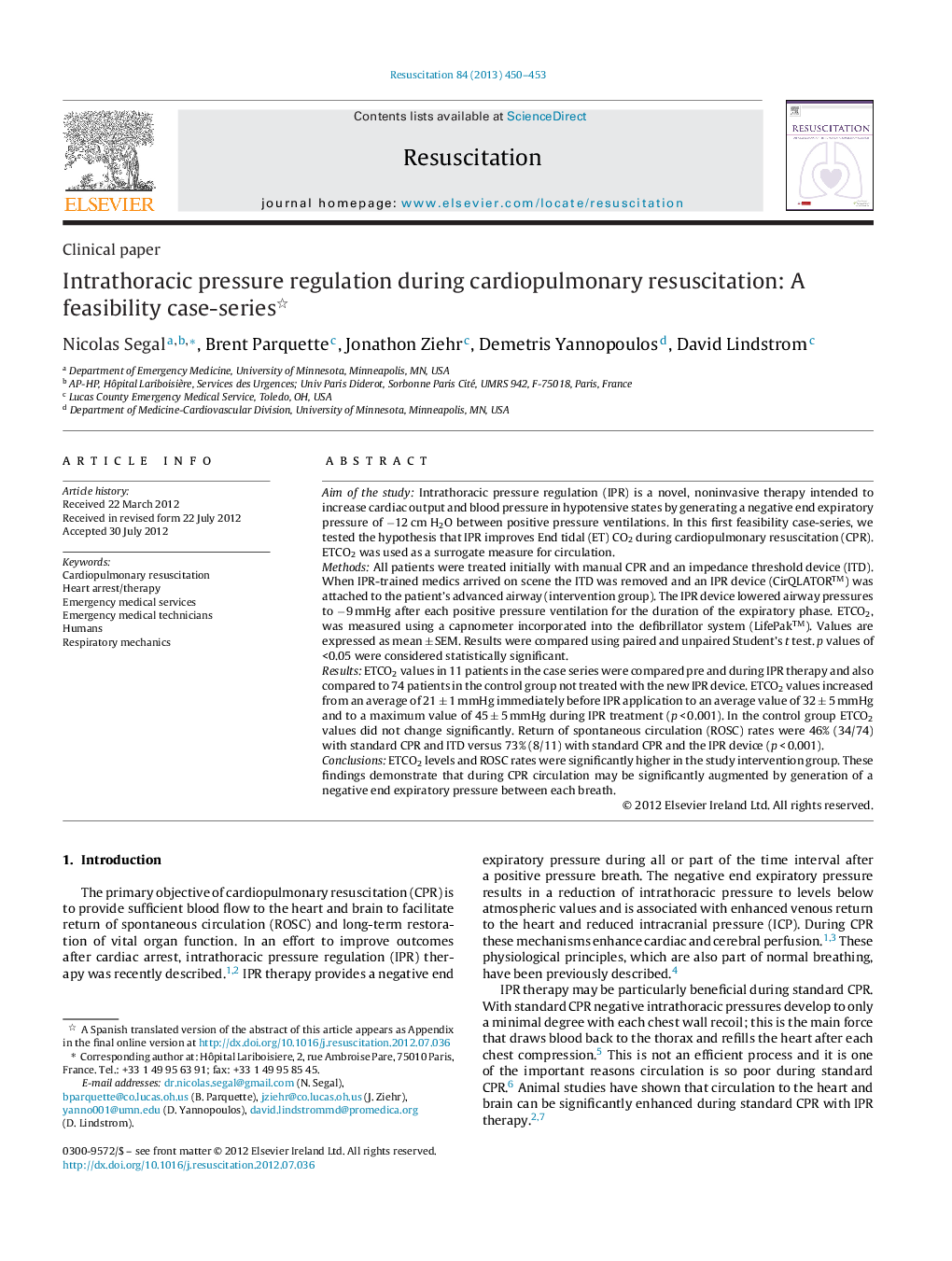| کد مقاله | کد نشریه | سال انتشار | مقاله انگلیسی | نسخه تمام متن |
|---|---|---|---|---|
| 3008111 | 1181448 | 2013 | 4 صفحه PDF | دانلود رایگان |

Aim of the studyIntrathoracic pressure regulation (IPR) is a novel, noninvasive therapy intended to increase cardiac output and blood pressure in hypotensive states by generating a negative end expiratory pressure of −12 cm H2O between positive pressure ventilations. In this first feasibility case-series, we tested the hypothesis that IPR improves End tidal (ET) CO2 during cardiopulmonary resuscitation (CPR). ETCO2 was used as a surrogate measure for circulation.MethodsAll patients were treated initially with manual CPR and an impedance threshold device (ITD). When IPR-trained medics arrived on scene the ITD was removed and an IPR device (CirQLATOR™) was attached to the patient's advanced airway (intervention group). The IPR device lowered airway pressures to −9 mmHg after each positive pressure ventilation for the duration of the expiratory phase. ETCO2, was measured using a capnometer incorporated into the defibrillator system (LifePak™). Values are expressed as mean ± SEM. Results were compared using paired and unpaired Student's t test. p values of <0.05 were considered statistically significant.ResultsETCO2 values in 11 patients in the case series were compared pre and during IPR therapy and also compared to 74 patients in the control group not treated with the new IPR device. ETCO2 values increased from an average of 21 ± 1 mmHg immediately before IPR application to an average value of 32 ± 5 mmHg and to a maximum value of 45 ± 5 mmHg during IPR treatment (p < 0.001). In the control group ETCO2 values did not change significantly. Return of spontaneous circulation (ROSC) rates were 46% (34/74) with standard CPR and ITD versus 73% (8/11) with standard CPR and the IPR device (p < 0.001).ConclusionsETCO2 levels and ROSC rates were significantly higher in the study intervention group. These findings demonstrate that during CPR circulation may be significantly augmented by generation of a negative end expiratory pressure between each breath.
Journal: Resuscitation - Volume 84, Issue 4, April 2013, Pages 450–453